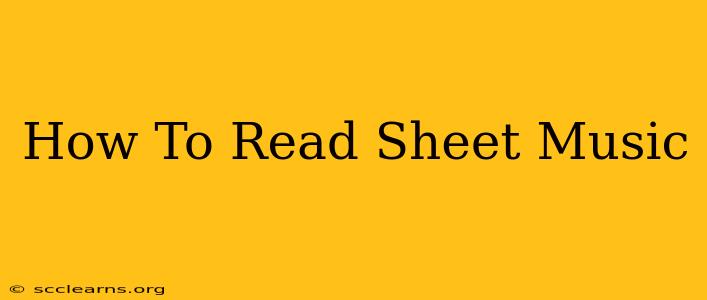Learning to read sheet music might seem daunting at first, but with a little patience and practice, you can unlock a world of musical possibilities. This comprehensive guide breaks down the fundamentals, making the process easier than you might think. Let's dive in!
Understanding the Staff and Clef
The foundation of sheet music is the staff, a set of five horizontal lines and the spaces between them. Notes are placed on these lines and spaces to indicate their pitch. But which pitch does each line and space represent? That's where the clef comes in.
The clef is a symbol at the beginning of the staff that tells you the pitch of each line and space. The two most common clefs are:
- Treble Clef (G Clef): This curvy symbol indicates the higher notes and is often used for melodies. The line that curls around the G represents the G note above middle C.
- Bass Clef (F Clef): This symbol indicates the lower notes and is commonly used for bass lines. The two dots are placed on the F below middle C.
Learning the Notes on the Treble Clef Staff
A helpful mnemonic for remembering the lines of the treble clef is EGBDF (Every Good Boy Does Fine). The spaces spell FACE.
Learning the Notes on the Bass Clef Staff
For the bass clef, the lines spell G B D F A (Good Boys Do Fine Always). The spaces spell ACEG.
Note Values and Rhythms
Notes on the staff don't just indicate pitch; they also show the duration of the sound. Different note shapes represent different durations:
- Whole Note (Semibreve): A hollow circle, representing four beats.
- Half Note (Minim): A hollow circle with a stem, representing two beats.
- Quarter Note (Crotchet): A hollow circle with a stem and no additional markings, representing one beat.
- Eighth Note (Quaver): A hollow circle with a stem and a single flag, representing half a beat.
- Sixteenth Note (Semiquaver): A hollow circle with a stem and two flags, representing a quarter of a beat.
Rests also play a crucial role, indicating silence. They correspond to the note values, each having a specific duration mirroring their note counterparts. For example, a whole rest represents four beats of silence.
Time Signatures
The time signature, a number fraction at the beginning of the piece, sets the meter – the rhythmic organization of the music. The top number indicates the number of beats in a measure, and the bottom number indicates the type of note that receives one beat. For example, 4/4 time (common time) means four quarter notes per measure.
Key Signatures and Sharps/Flats
Key signatures appear after the clef and time signature. They indicate the key of the piece, telling you which notes are sharp (#) or flat (♭) throughout the piece. Understanding key signatures simplifies reading and playing music significantly.
Putting it All Together: Practicing and Resources
Learning to read sheet music is a journey, not a race. Start slowly, focusing on one aspect at a time. Practice regularly, even just for a few minutes each day. Use various resources like:
- Online tutorials: Many excellent free tutorials and interactive lessons are available online.
- Sheet music apps: Apps provide interactive exercises and feedback.
- Music teachers: A qualified teacher can provide personalized instruction and guidance.
With consistent effort and the right resources, you'll soon be confidently reading sheet music and enjoying the musical rewards. Remember, patience and perseverance are key! Happy reading!

